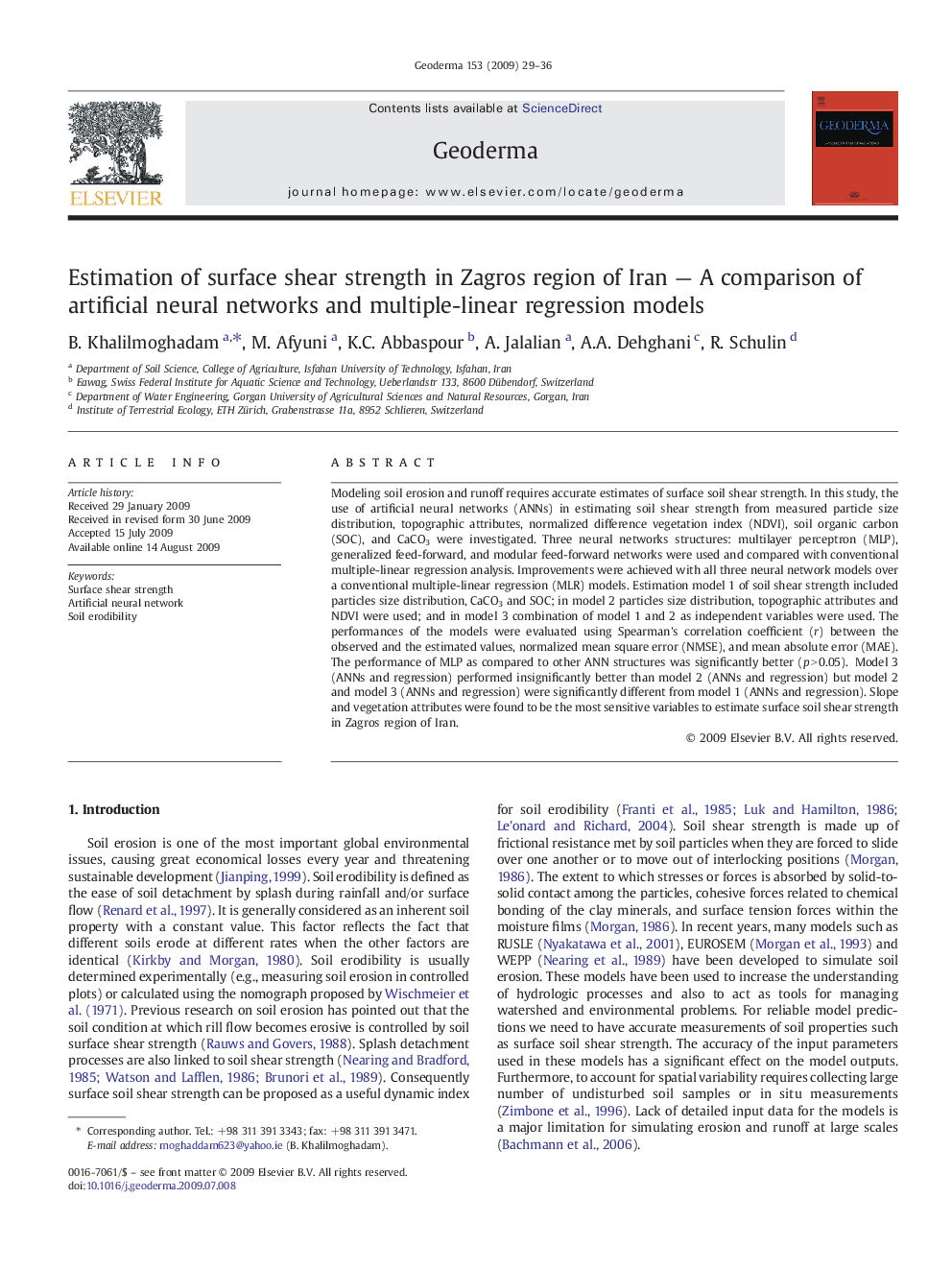| Article ID | Journal | Published Year | Pages | File Type |
|---|---|---|---|---|
| 4574287 | Geoderma | 2009 | 8 Pages |
Abstract
Modeling soil erosion and runoff requires accurate estimates of surface soil shear strength. In this study, the use of artificial neural networks (ANNs) in estimating soil shear strength from measured particle size distribution, topographic attributes, normalized difference vegetation index (NDVI), soil organic carbon (SOC), and CaCO3 were investigated. Three neural networks structures: multilayer perceptron (MLP), generalized feed-forward, and modular feed-forward networks were used and compared with conventional multiple-linear regression analysis. Improvements were achieved with all three neural network models over a conventional multiple-linear regression (MLR) models. Estimation model 1 of soil shear strength included particles size distribution, CaCO3 and SOC; in model 2 particles size distribution, topographic attributes and NDVI were used; and in model 3 combination of model 1 and 2 as independent variables were used. The performances of the models were evaluated using Spearman's correlation coefficient (r) between the observed and the estimated values, normalized mean square error (NMSE), and mean absolute error (MAE). The performance of MLP as compared to other ANN structures was significantly better (p > 0.05). Model 3 (ANNs and regression) performed insignificantly better than model 2 (ANNs and regression) but model 2 and model 3 (ANNs and regression) were significantly different from model 1 (ANNs and regression). Slope and vegetation attributes were found to be the most sensitive variables to estimate surface soil shear strength in Zagros region of Iran.
Related Topics
Physical Sciences and Engineering
Earth and Planetary Sciences
Earth-Surface Processes
Authors
B. Khalilmoghadam, M. Afyuni, K.C. Abbaspour, A. Jalalian, A.A. Dehghani, R. Schulin,
